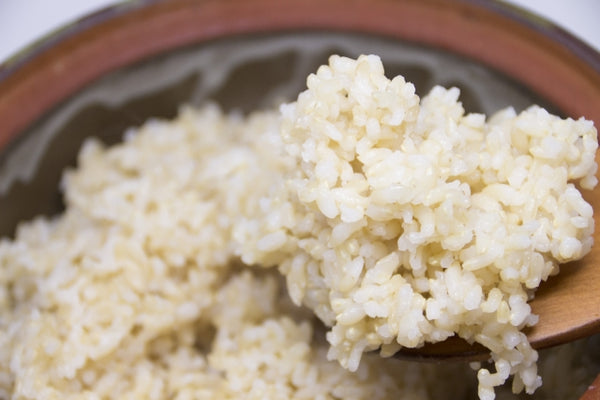Guide to Types of Japanese Rice

The most widely consumed rice in Japan is a cultivar of Japonica rice, a short-grain rice with a firm texture. Compared to its long-grain counterparts such as jasmine and basmati, Japonica rice is characterized by its plump shape and sticky texture that makes it easy to pick up with chopsticks. In Japan, rice is commonly served with every meal, including breakfast, making it an essential component of the Japanese diet. According to a 2015 study, the average Japanese person consumes about 119 grams of rice per day, the equivalent of two and a half onigiri’s worth. In this article, we break down the different varieties of Japanese rice to help you decide which is the best for your particular diet.

White Rice (Haku-Mai, 白米)
The most popular of all Japanese rice varieties, white rice is created by removing the husk, bran, and germ from each grain of rice, leaving behind only the soft inner endosperm. Because white rice does not contain any outer layers, it is lower in fiber than other rice varieties, but also absorbs water and cooks more quickly. White rice has a delicate sweetness that pairs well with raw seafood, making it the rice of choice for sushi.

Brown Rice (Gen-Mai, 玄米)
Brown rice is a rice grain with its bran and germ intact. As a whole grain, it contains fiber, minerals (iron, magnesium, and calcium), protein, and vitamins, making it higher in nutritional density than polished rice varieties. However, brown rice requires a longer soaking and cooking process and has a tough texture, meaning it is more difficult to chew. Brown rice is popular amongst the health-conscious and those who prefer a heartier flavor.

Whole Rice (Haiga-Mai, 胚芽米)
Also known as “germ rice”, whole rice is described as a mix between white and brown rice. To produce whole rice, the bran is removed, but at least 80% of the germ remains. The result is a rice variety that strikes a balance between nutrition and palatability. It is light brown in color, slightly nuttier than white rice, and more tender and easily digestible than brown rice.

Mixed Grains Rice (Zakkoku-Mai, 雑穀米)
Mixed Grains Rice is any variety of rice cooked with seeds, grains, and beans to add extra nutrition, flavor, and texture. Common zakkoku ingredients include millet, barley, quinoa, amaranth, soybeans, red beans, black rice, and sesame. Many Japanese retailers sell pre-mixed zakkoku blends, but you can also assemble your own special mix at home!

Glutinous rice (Mochi-gome, もち米)
Glutinous rice, sometimes known as sweet rice or sticky rice, is the variety of rice used to make mochi. Exceptionally sticky, it can be mashed into a paste to make rice cakes or sweetened for use in confections. Rather than being boiled, glutinous rice is usually prepared by steaming. Extremely dense and filling, it is usually reserved for special occasions and served in small quantities.
About the author:

Britney Budiman
Britney Budiman (@booritney) is a writer, minimalist, aspiring effective altruist, and runner-in-progress with a penchant for saying “yes.” Previously, she has worked in Cambodia at a traditional arts NGO, in Brazil as a social sciences researcher, and in San Francisco at a housing start-up. She currently lives in the countryside of Kagoshima, Japan, where she teaches English. Her favorite thing in the world is good conversation.





4 コメント
Thank you for your comment! We wrote a blog post entitled “How To Make The BEST Tasting Japanese Rice… On A Stove-Top!” that you might find helpful!
How do you cook Japanese rice
Hi Robert! We’re so sorry to hear of your wife’s passing but take comfort that we’re able to bring some connection to a wonderful person. Thank you for being a part of our Kokoro Community!
Thanks for this enlightening, saliva-inducing guide by Britney Budiman. I really enjoyed the read!…inter alia, it allows me to feel a continued closeness to my Japanese wife Masako, now 7 years passed. (I wish I could find a date of authorship — always, for my OCD reasons, important — but I suppose the subject and content are timeless….)
Gochisoosama deshita!